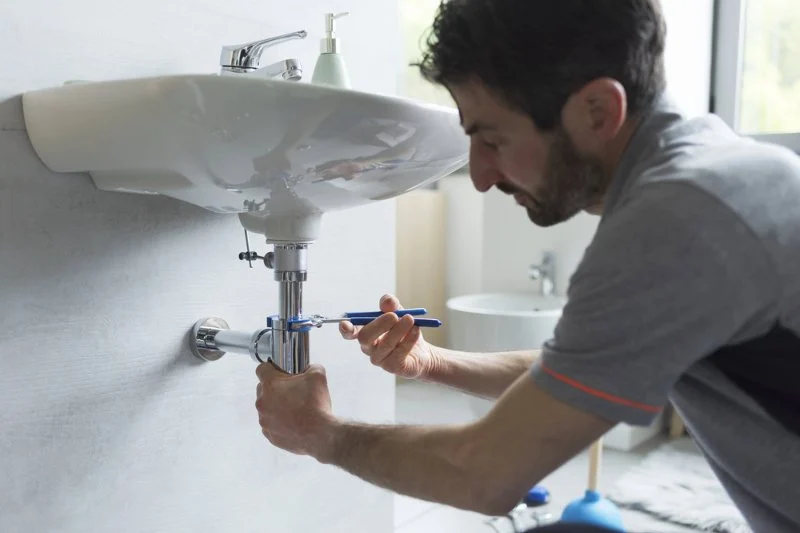
When to Call a Professional for Sewer Line Issues
Sewer line issues are one of the most unpleasant and potentially expensive problems a homeowner can face. The thought of a clogged or damaged sewer line can be overwhelming, especially when the problem is hidden from sight, deep underground. The good news is that not every sewer line issue requires a professional plumber, but understanding when to call in the experts is crucial to avoiding bigger problems down the road. In this article, we’ll discuss the signs that indicate when it’s time to call a professional for sewer line issues, the common causes, and what to expect during a repair.
- Common Signs of Sewer Line Issues
- Why Timing is Important
- Potential Causes of Sewer Line Damage
- What to Expect When a Professional is Called
- Preventing Future Sewer Line Issues
- Real-Life Success Stories
1. Common Signs of Sewer Line Issues
It’s important to recognize the early warning signs of sewer line problems. Ignoring these signs can lead to more serious, costly repairs. Here are some of the most common signs of sewer line issues:

Omar's Plumbing in Long Beach
Long BeachLos Angeles CountyCalifornia
1610 Cherry Ave #305, Long Beach, CA 90813, USA
1.1 Slow Draining Drains
If multiple drains in your home are draining slowly or backing up, it’s often a sign of a clog in the main sewer line. You may notice this in sinks, bathtubs, or toilets. A slow drain that doesn’t improve despite using a plunger or drain cleaner could indicate a more serious issue within the sewer system.
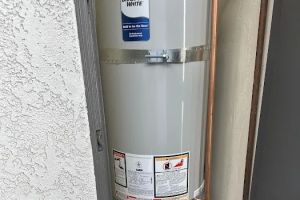
Top Shelf Plumbing Solutions
Huntington BeachOrange CountyCalifornia
17622 Metzler Ln, Huntington Beach, CA 92647, USA
1.2 Unpleasant Odors
One of the telltale signs of a sewer line issue is foul-smelling odors coming from the drains or around your yard. If the smell of sewage becomes noticeable inside your home or near your sewer access point, it could be a sign that the sewer line is clogged or compromised, causing waste to back up.
1.3 Gurgling Noises
If you hear gurgling noises coming from your sink, bathtub, or toilet, it may indicate a problem with the sewer line. These noises are caused by air trapped in the system due to blockages, which can prevent the free flow of water and waste.
1.4 Sewer Backup in Your Home
Perhaps the most alarming sign of a sewer line problem is when wastewater backs up into your home through drains or toilets. This is not only a sanitation issue but a major indicator that your sewer line is severely compromised and needs immediate attention from a professional.
2. Why Timing is Important
Dealing with sewer line issues as soon as possible is critical. Early intervention can save you a lot of money in the long run by preventing further damage. For example, a small blockage can quickly turn into a major clog that causes sewage to back up into your home, which may lead to costly repairs and cleanup. Timing is key to minimizing damage and ensuring the longevity of your plumbing system.
2.1 The Risk of Water Damage
When sewer lines fail or clog, water damage can occur. Wastewater flooding your home not only damages the structure but also creates a breeding ground for mold and bacteria. Acting early can prevent these secondary issues and protect your home from significant damage.
2.2 Avoiding Costly Repairs
Many sewer line problems can be repaired with minimal disruption if addressed early. However, if left untreated, these issues can worsen, leading to extensive damage to the pipes, surrounding soil, or even the foundation of your home. The longer you wait to fix the problem, the higher the repair costs are likely to be.
3. Potential Causes of Sewer Line Damage
Sewer lines can become damaged for a variety of reasons. Knowing the potential causes of these issues can help you take preventative steps to avoid problems in the future:
3.1 Tree Roots
Tree roots are one of the leading causes of sewer line damage. As trees grow, their roots can invade sewer lines in search of water, causing blockages and even breaking the pipes. This is particularly common in older homes with mature trees close to the plumbing system.
3.2 Aging Pipes
Over time, sewer pipes can weaken due to wear and tear, especially in older homes. Materials like clay or cast iron are prone to cracking and shifting, which can cause leaks and clogs. If your home was built decades ago, it’s important to monitor the condition of your sewer lines closely.
3.3 Poor Installation or Damage
Sometimes sewer lines are damaged due to poor installation or external factors such as construction work or heavy traffic. If the pipes were improperly installed or subjected to external pressure, they may collapse or develop cracks, leading to blockages or leaks.
3.4 Grease and Debris Buildup
Excessive grease or foreign objects flushed down the drain can cause clogs in the sewer line. Over time, this buildup restricts water flow and can lead to serious blockages. Regularly disposing of grease properly and avoiding flushing non-biodegradable items can help prevent this problem.
4. What to Expect When a Professional is Called
If you decide to call a professional plumber to assess the issue, here's what you can expect during the process:
4.1 Inspection and Diagnosis
The plumber will begin by inspecting the sewer line. They may use a camera inspection tool to view the inside of the pipes and identify the exact location of any blockages or damage. This is a non-invasive way to pinpoint the problem accurately without digging up the yard or tearing down walls.
4.2 Repair or Replacement Options
Once the issue is identified, the plumber will recommend the best course of action. In some cases, cleaning or unclogging the pipes is enough. However, if the pipes are damaged, they may need to be repaired or replaced entirely. The plumber will provide a cost estimate for the repair or replacement.
4.3 Professional Tools and Equipment
Professional plumbers use specialized tools like hydro-jetting machines to clear blockages or trenchless technology to replace damaged pipes without extensive excavation. These advanced techniques ensure that the repair is done effectively and efficiently, minimizing disruption to your home.
5. Preventing Future Sewer Line Issues
While sewer line problems can sometimes be unavoidable, there are several steps you can take to prevent future issues:
5.1 Regular Maintenance
Schedule regular plumbing inspections to catch problems before they worsen. A professional plumber can perform routine checks to ensure that your sewer lines are functioning properly and to address minor issues before they become major problems.
5.2 Proper Waste Disposal
Be mindful of what you flush down the toilet and dispose of in the kitchen sink. Avoid flushing items like wipes, grease, or non-food materials that can cause blockages. Using a drain strainer in your kitchen sink can also help catch debris before it enters your plumbing system.
5.3 Tree Root Management
If you have large trees near your sewer lines, consider root barriers or regular root pruning to prevent the roots from infiltrating the pipes. This can help prevent costly damage caused by root growth.
6. Real-Life Success Stories
Many homeowners have successfully managed sewer line issues with professional help. For instance, Mary noticed foul odors and slow draining in her home, so she called a plumber. The plumber found tree roots had invaded her sewer line. After using trenchless technology to replace the damaged pipe, Mary no longer had issues with clogs or odors.
Similarly, John’s home experienced frequent backups despite trying over-the-counter drain cleaners. After calling a professional, the plumber discovered that his aging pipes were deteriorating. The plumber replaced the pipes with newer, more durable ones, saving John from future plumbing disasters.
If you suspect sewer line issues in your home, don’t wait until the problem becomes worse. Visit PestControlHub to find the best services and solutions to protect your home from sewer line problems.






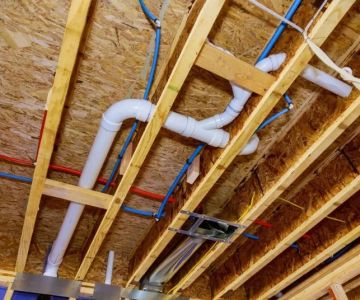
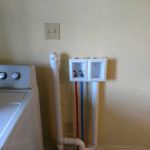 Brian G's Plumbing4.0 (45 reviews)
Brian G's Plumbing4.0 (45 reviews) Kelly Plumbing & Heating, Inc.4.0 (165 reviews)
Kelly Plumbing & Heating, Inc.4.0 (165 reviews) D&K Generators, Boilers, and Geothermal4.0 (4 reviews)
D&K Generators, Boilers, and Geothermal4.0 (4 reviews) Riverview Plumbing, Inc.4.0 (12 reviews)
Riverview Plumbing, Inc.4.0 (12 reviews) Legacy Sewer and Drain4.0 (152 reviews)
Legacy Sewer and Drain4.0 (152 reviews) Roncelli & Son's Plumbing4.0 (163 reviews)
Roncelli & Son's Plumbing4.0 (163 reviews)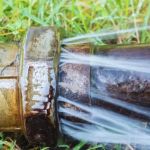 How to Prevent Leaks from Expanding Joints in Pipes: A Complete Guide
How to Prevent Leaks from Expanding Joints in Pipes: A Complete Guide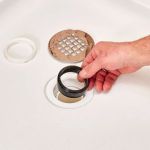 How to Replace a Floor Drain Strainer: A Step-by-Step Guide
How to Replace a Floor Drain Strainer: A Step-by-Step Guide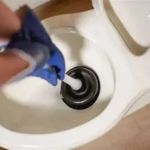 Steps to Unclog a Toilet That Won’t Flush Properly
Steps to Unclog a Toilet That Won’t Flush Properly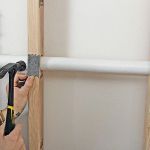 How to Reroute Plumbing for a Kitchen Island: A Step-by-Step Guide
How to Reroute Plumbing for a Kitchen Island: A Step-by-Step Guide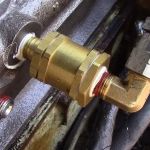 How to Replace an In-Line Check Valve: A Step-by-Step Guide for Homeowners
How to Replace an In-Line Check Valve: A Step-by-Step Guide for Homeowners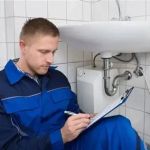 How to Perform a DIY Plumbing Inspection for Homeowners
How to Perform a DIY Plumbing Inspection for Homeowners